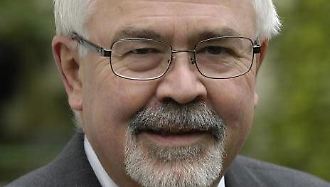Once Upon a time …
Fairy tales about the automotive industry
By Helmut Becker
January 28, 2024, 2:20 p.m
Listen to article
This audio version was artificially generated. More info | Send feedback
Tesla wants to sell 20 million vehicles by 2030. If the federal government has its way, 15 million electric cars will be on Germany’s roads by 2030. Big goals. Or just pure fairytale hour?
“Once upon a time…” is how fairy tales usually begin. Those of the Brothers Grimm are probably the most famous in this country and are centuries old. The fairy tales surrounding the automotive industry are younger, but no less entertaining. The following examples may serve as evidence for this thesis.
The EU and the combustion engines
For example, EU environmental policy in Brussels tells the fairy tale that only a ban on combustion engines from 2035 can save the climate. In addition, mobility and a flourishing automotive industry are still possible in Europe even after 2035.
However, the European industry association ACEA has its doubts about this: 12.9 million Europeans currently work in the automotive industry. This corresponds to 8.3 percent of all jobs in the manufacturing sector. More than seven percent of the EU’s gross domestic product (GDP) is generated by the automotive industry. Impressive numbers. The problem is that even without import competition from Chinese car manufacturers, the value added in the European car industry would fall by 40 percent simply due to the switch from combustion engine to electric drive. For Germany alone, this would mean a loss of around 300,000 jobs. Nothing flourishes there anymore!
The federal government and its numbers
The federal government also has fairy-tale wishes. She wants to see a total of 15 million fully electric vehicles (so-called BEVs) driving on German roads by 2030. Whereas car experts such as Fritz Indra consider at best five million BEVs to be conceivable. The total number of electric cars at the end of 2023 was around 1.4 million and thus comprised only three percent of the entire German car fleet of 48.8 million cars. A BEV fleet of 15 million units by 2030 is completely utopian!
Because: In 2023 as a whole, 524,000 purely electric cars were newly registered in Germany. A stock of five million would theoretically be achievable after seven years in 2030. However, if the population is to grow to 15 million, as the federal government is aiming for, an average of two million BEVs would have to be newly registered in this country every year. That would mean two thirds of the total registrations for 2023. In addition, in order to reach this scale, production capacities would have to increase significantly. A total of four factories the size of Tesla in Grünheide would be necessary for this.
Everything is missing for that! Above all, demand for electric cars. The euphoric target figures hide the slump in new registrations of electric cars from September 2023. This is despite the fact that only the reduction in the subsidy bonus came into force in the autumn. From this point on, the e-market (BEV and plug-in hybrids) in Germany literally collapsed: in December 2023 alone, BEV registrations were 54,650, 48 percent below the value in the same month of the previous year. For plug-in hybrids (PHEV), 17,890 new registrations represent a year-on-year decline of 74 percent. Even if the values from December 2022 are somewhat distorted due to early purchases, the decision to abolish the purchase premium for the market in the current and in fear the worst in the coming years. No wonder that many manufacturers now want to save demand with their own premium payments.
Musk’s fairy tale
But it’s not just politicians who are attached to fairytale goals, some manufacturers are also coming up with almost unbelievable figures. Tesla, for example. Co-founder and CEO Elon Musk never tires of mentioning that the US electric car manufacturer will achieve sales of 20 million vehicles in 2030. That would be around a quarter of today’s annual world market sales volume.
In 2023, Tesla will have achieved its own sales target of 1.8 million units. However, Musk had to reduce prices several times and not just in China. At the same time, the electric car pioneer is facing increasing competition in the Middle Kingdom, the largest car market in the world. Tesla is no longer the largest electric car manufacturer. The e-industry leader is called BYD, even if the manufacturer also sells hybrids, unlike the fully electric Tesla Group. Of the almost three million BYDs sold in 2023, 1.5 million were BEVs. The momentum is also on the Chinese side: BYD delivered more than 525,000 BEV electric cars in the final quarter – more than Tesla for the first time. This means that Tesla’s sales targets are likely to turn out to be a fairy tale. “And if they are not dead …”
